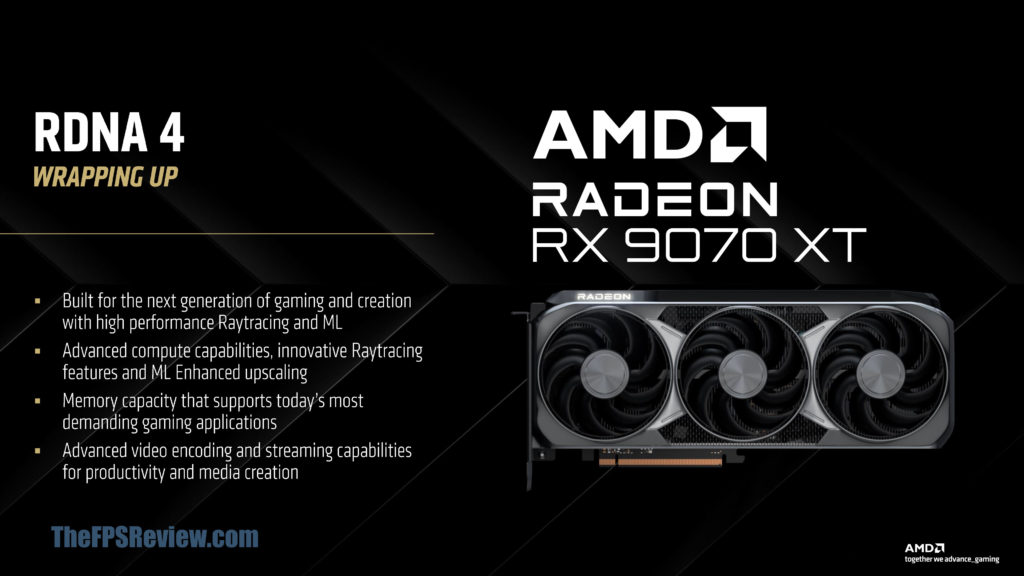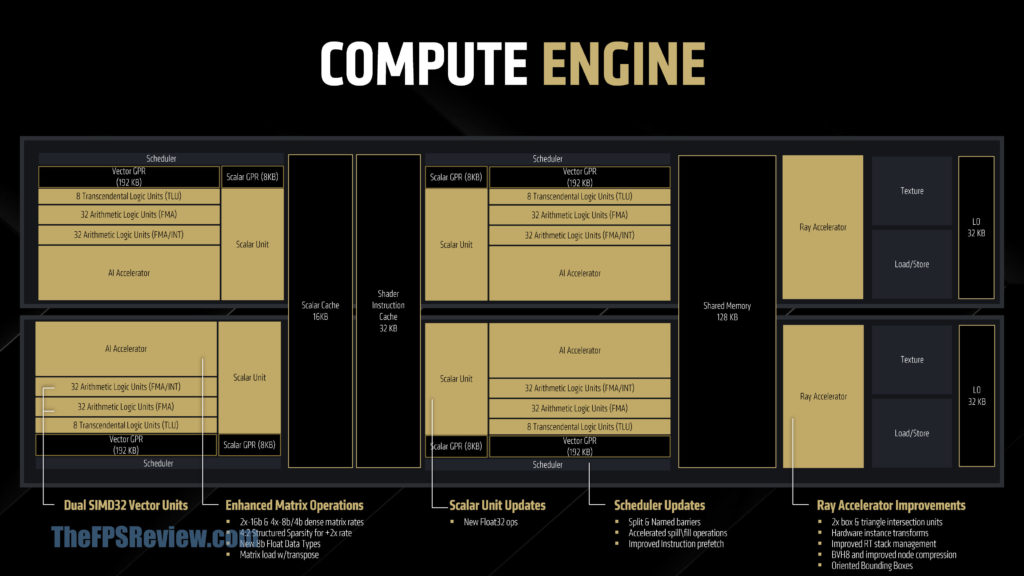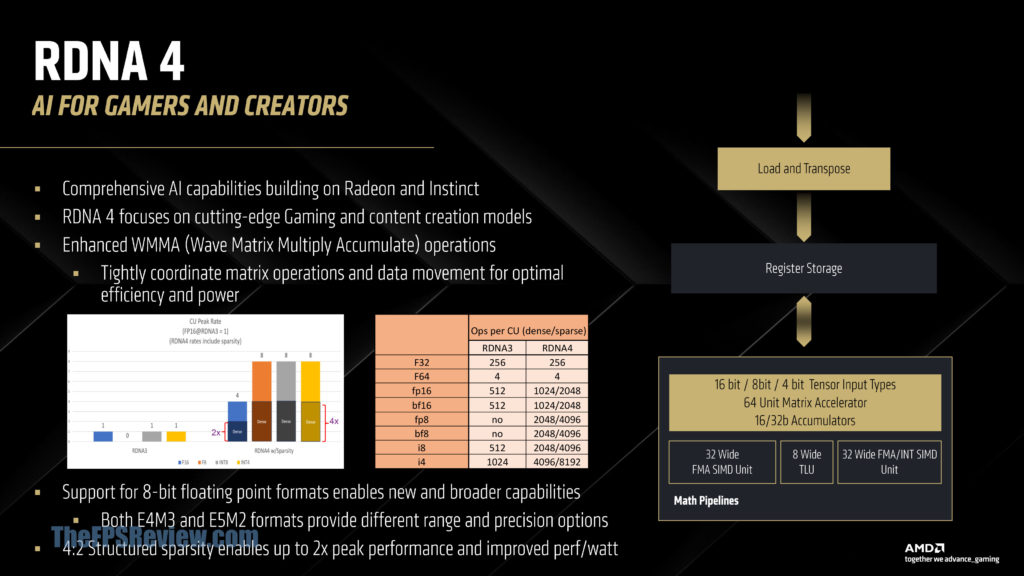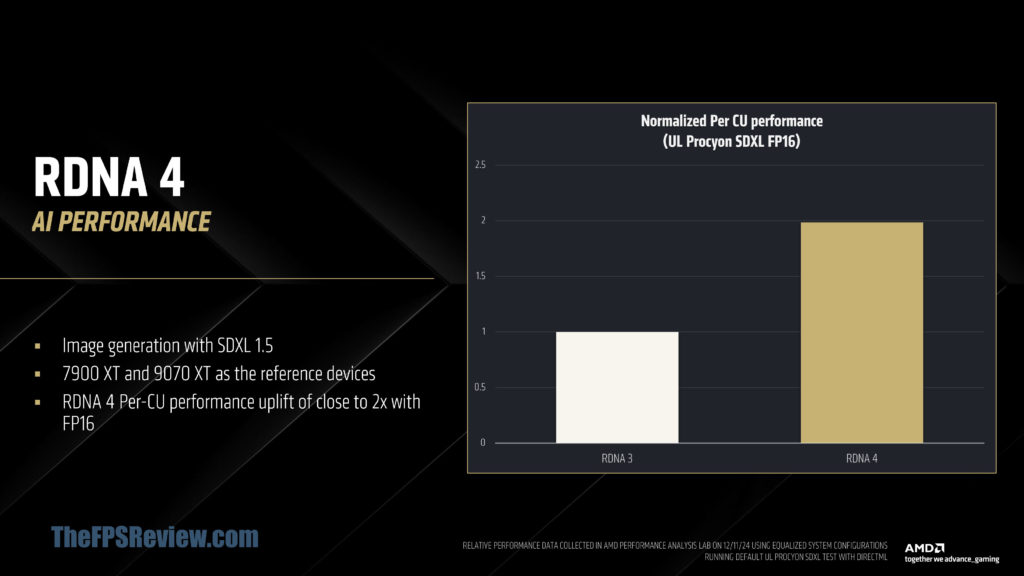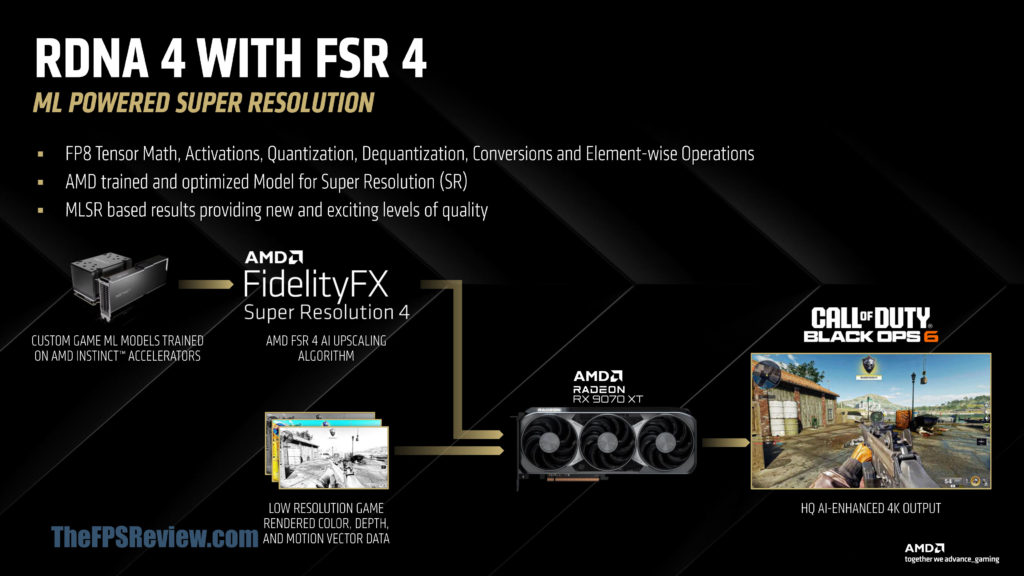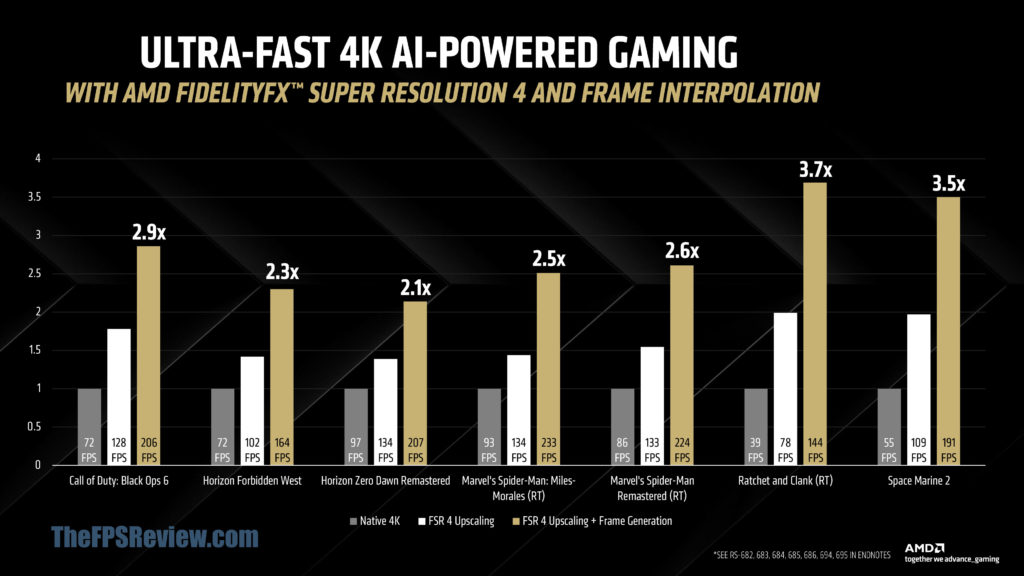RDNA 4 Architecture Breakdown
On this page, we will not post the entire RDNA 4 Architecture Press Deck for your viewing pleasure, with some commentary from us.
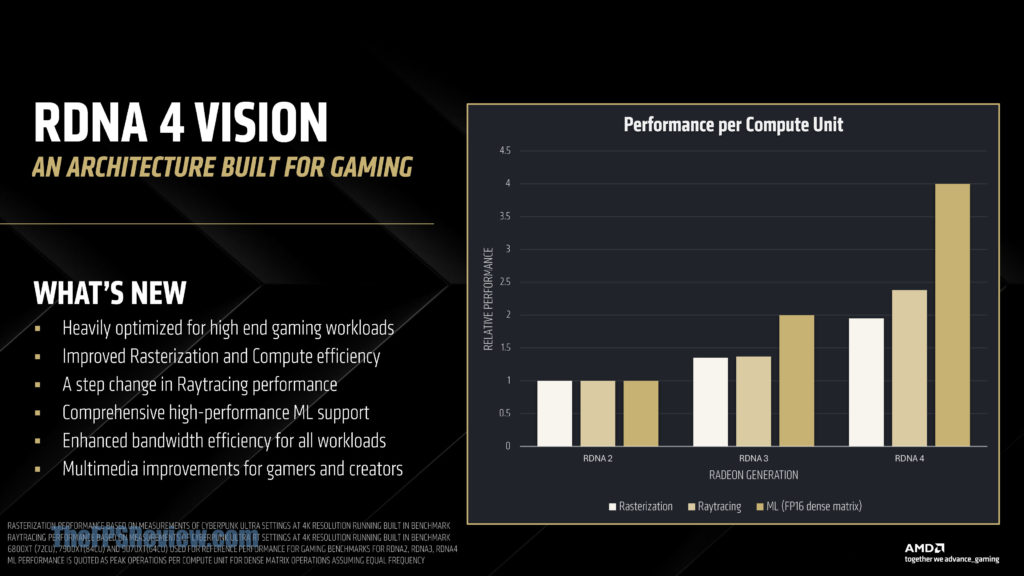
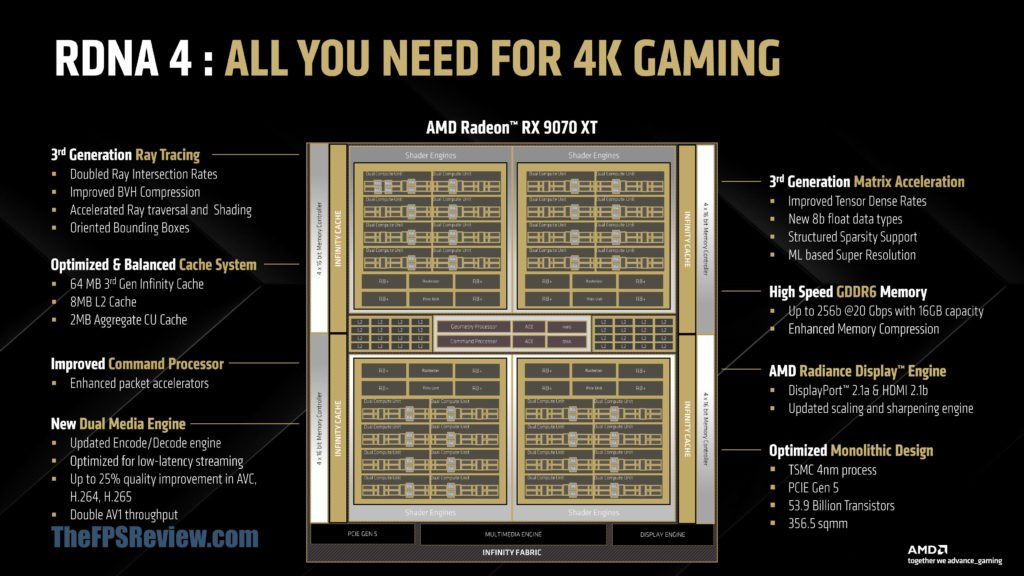
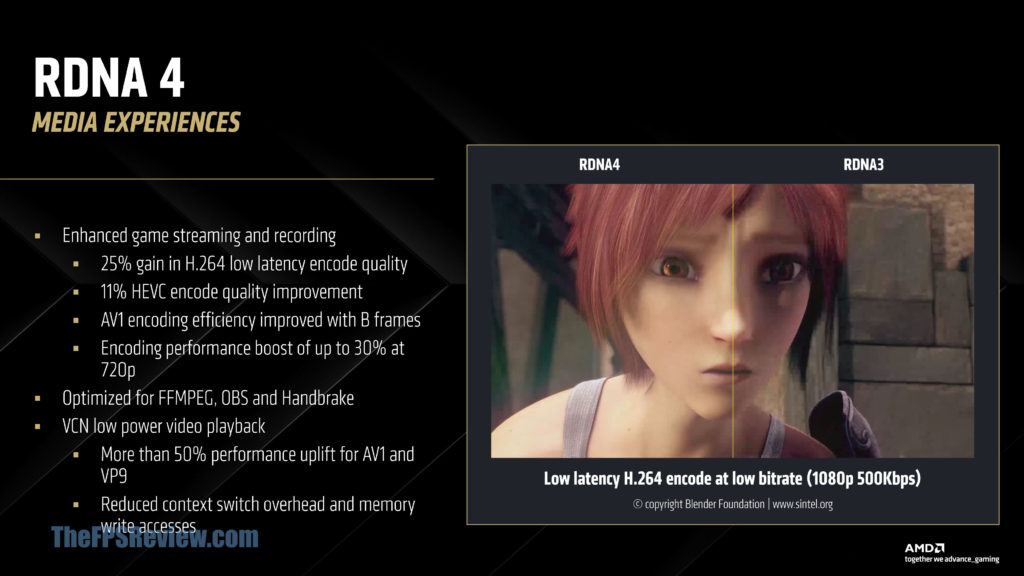
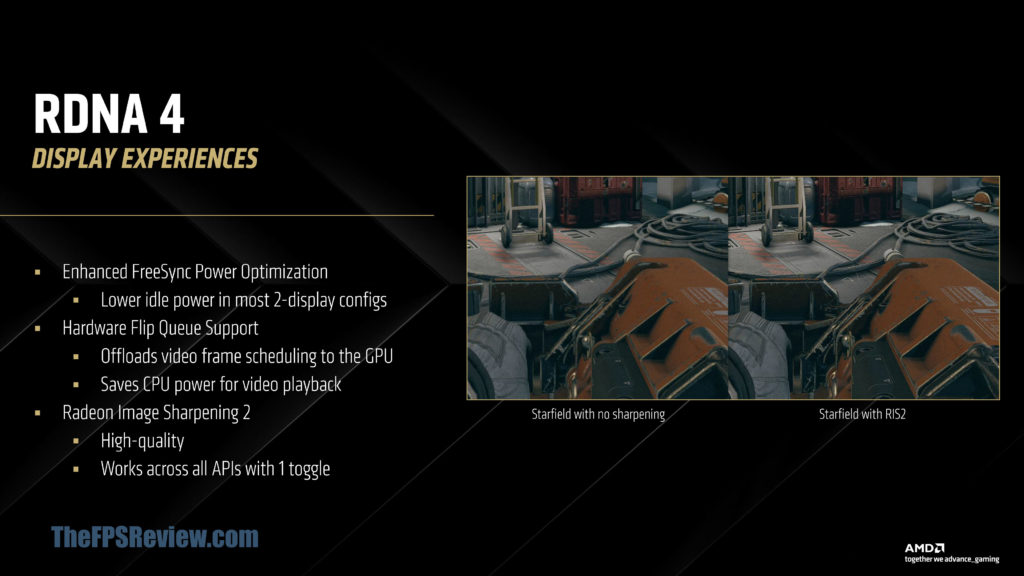
The RDNA 4 vision was to develop a compute unit built for high-end gaming workloads, improving rasterization and compute efficiency and a step change in Raytracing performance. AMD also designed it with high-performance ML support and enhanced bandwidth efficiency for all workloads, as well as multimedia improvements for gamers and creators. There was a large focus on AI performance this generation, as well as Raytracing, at least according to the graph.
The second screenshot above is a high-level overview of the improvements. Take note that with the 3rd Generation Ray Tracing units, they have been improved to Double Ray Intersection Rates and Improved BVH Compression with improvements to Ray traversal and Shading. The improved AI acceleration with the 3rd Generation Matrix Accelerators has improved Tensor Dense Rates, new 8b float data types, Structured Sparsity Support, and ML-based Super Resolution support.
There are also improvements to bandwidth, such as an optimized cache system. This uses 64MB of 3rd Gen Infinity Cache and 8MB of L2 Cache with 2MB Aggregate CU Cache. It is connected with a 256-bit GDDR6 memory interface at 20 Gbps with 16GB capacity and memory compression.
There are some big improvements to the Media Engine and AMD Radiance Display Engine. The Encode/Decode engine is updated and optimized for low-latency streaming with up to 25% quality improvement in AVC, H.264, and H.265 with double AV1 throughput. AMD is claiming a 30% encoding boost at 720p and updates to reduce overhead. The Radiance Engine supports DisplayPort 2.1a and HDMI 2.1b with an updated scaling and sharpening engine.
Overall, RDNA 4 is built on a TSMC 4nm process and supports PCIe Gen5 with 53.9B transistors.
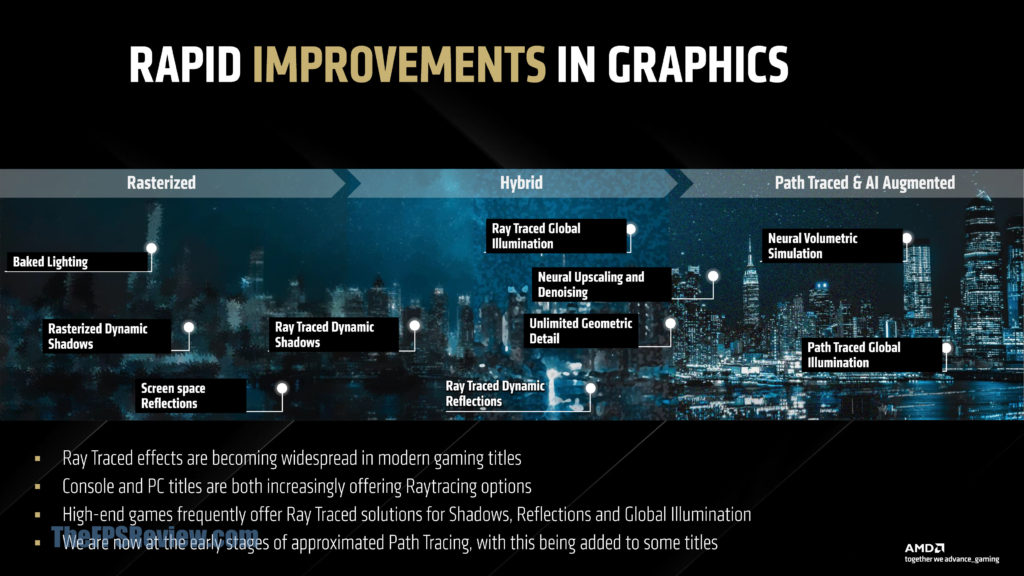
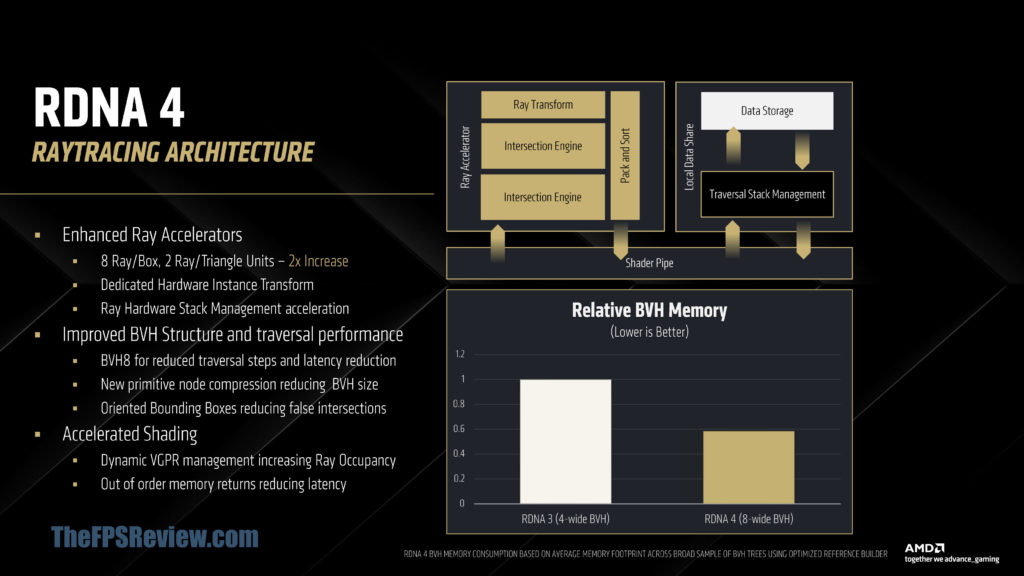
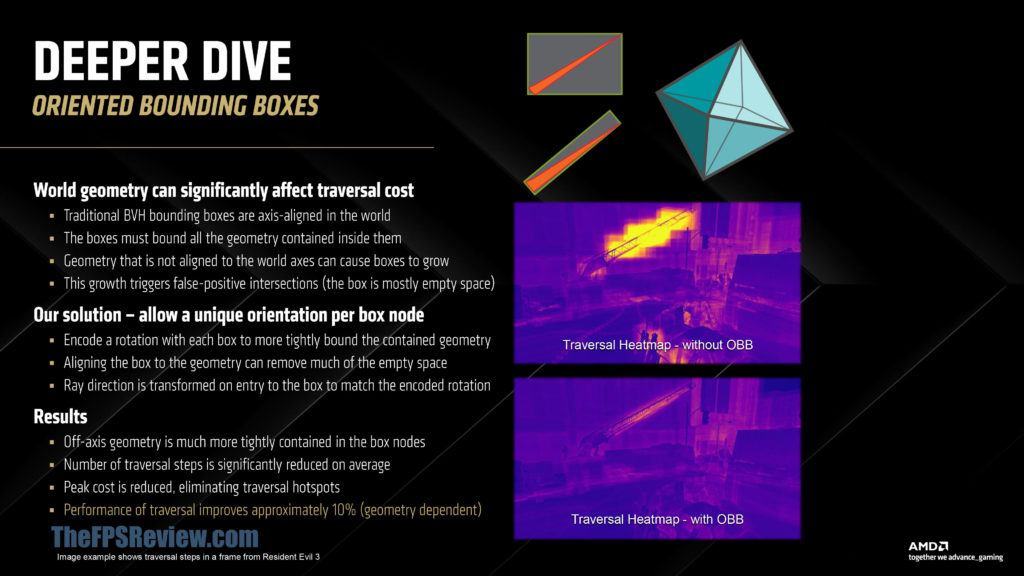
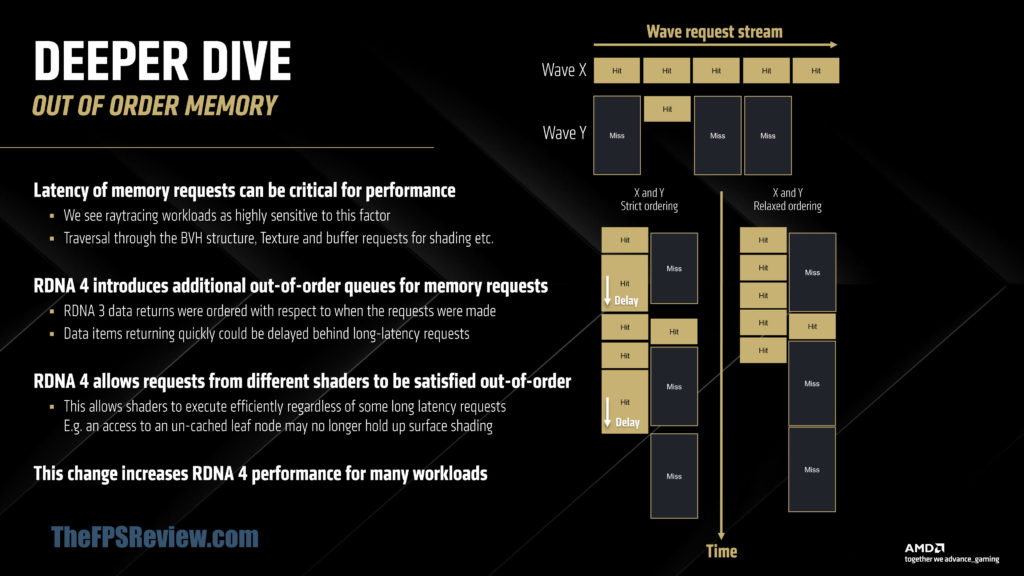
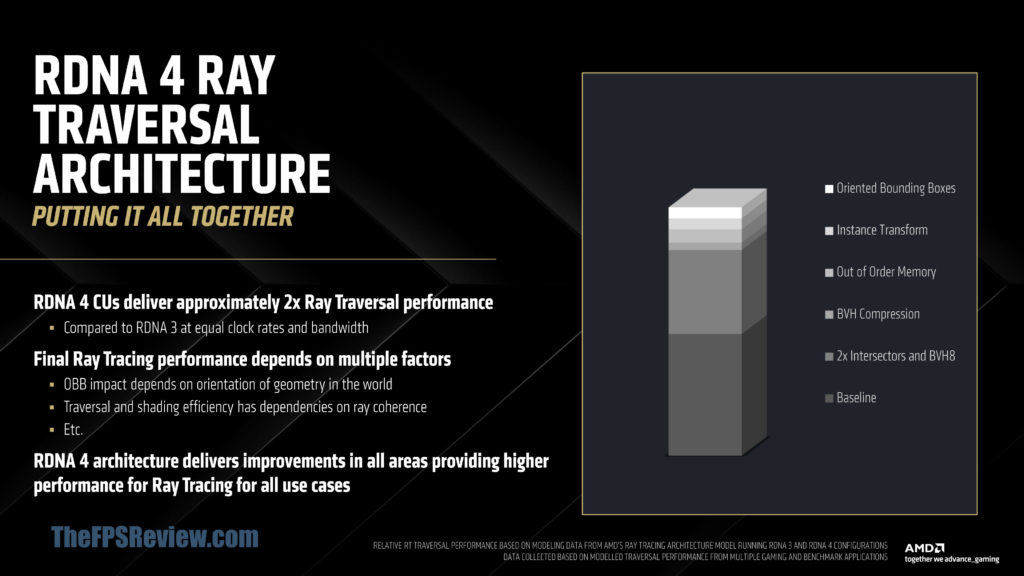
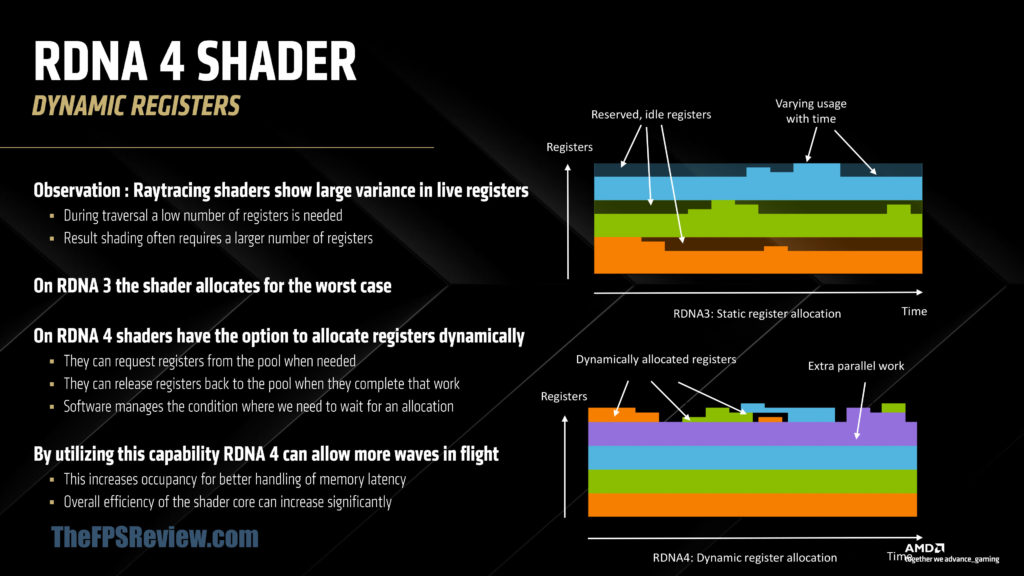
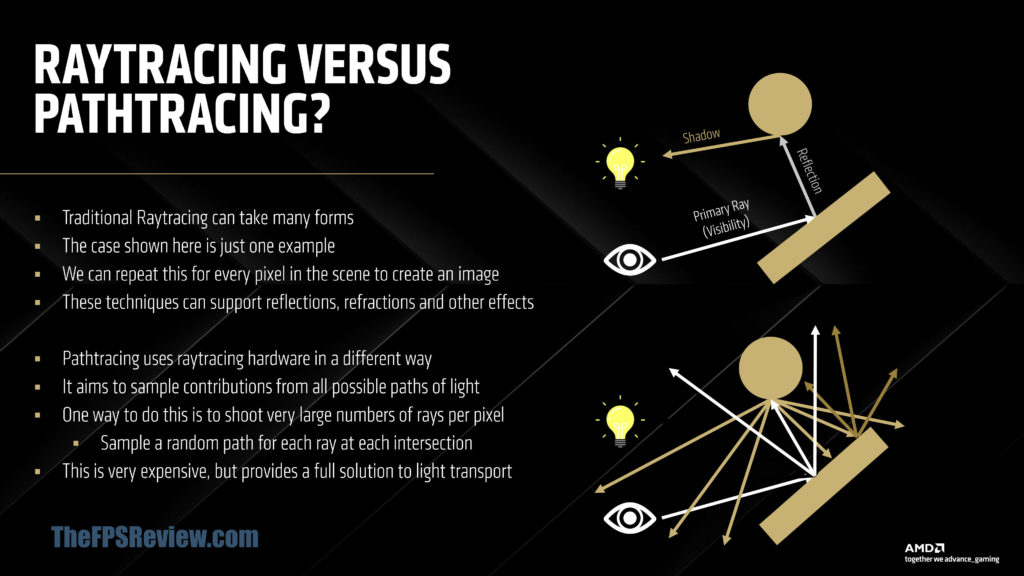

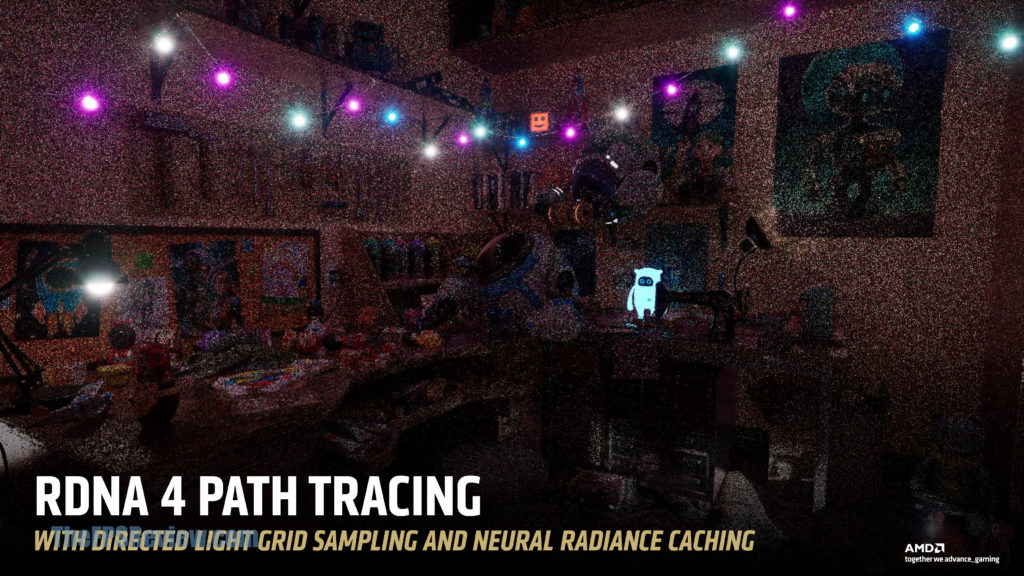
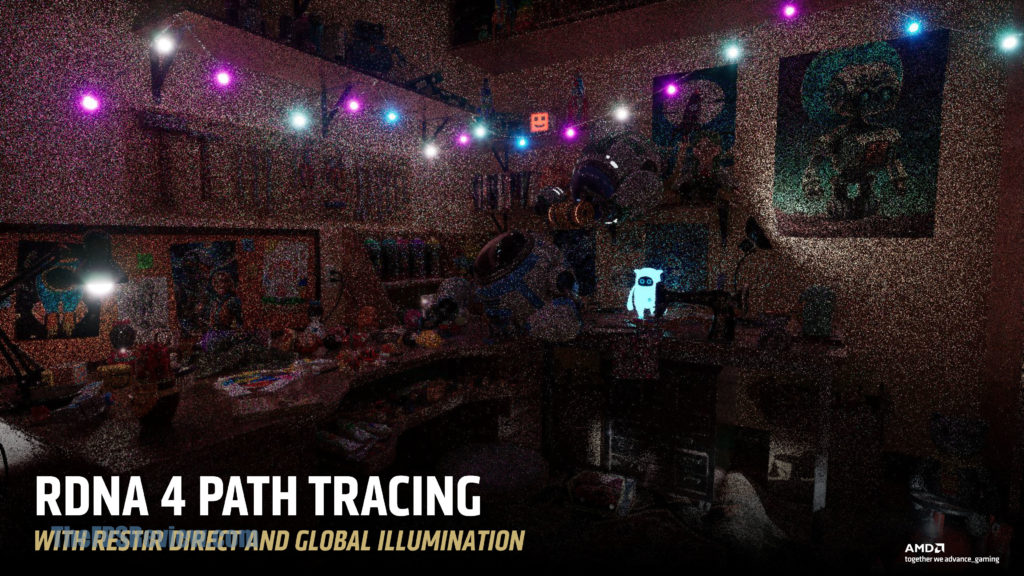
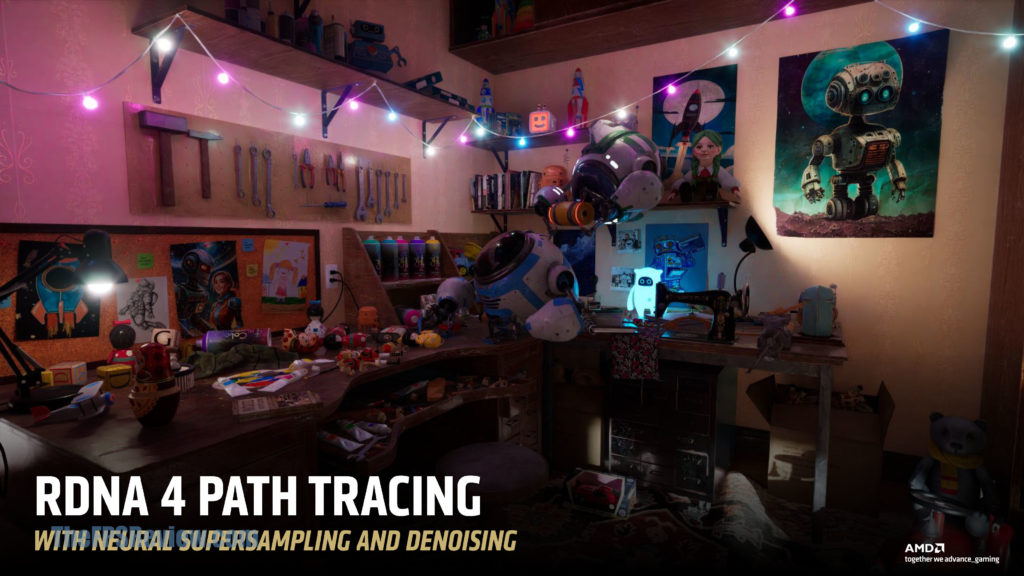
AMD has seen the light, and that light is Ray Traced. AMD is acknowledging that Ray Traced effects are becoming widespread in modern gaming titles, and both console and PC demand these Raytracing options. The Ray Accelerators have been improved in RDNA 4 by doubling the Ray Intersection. With an improved BVH Structure and traversal performance and Oriented Bounding Boxes, perhaps RT will be faster per CU compared to RDNA 3.
